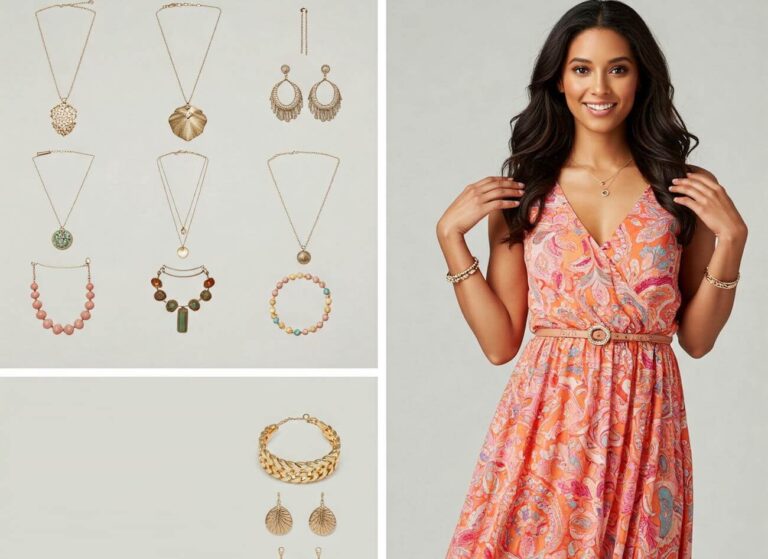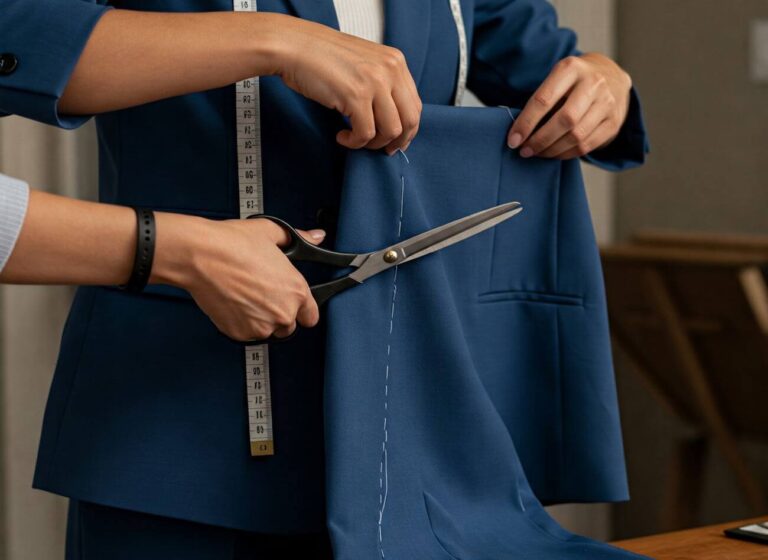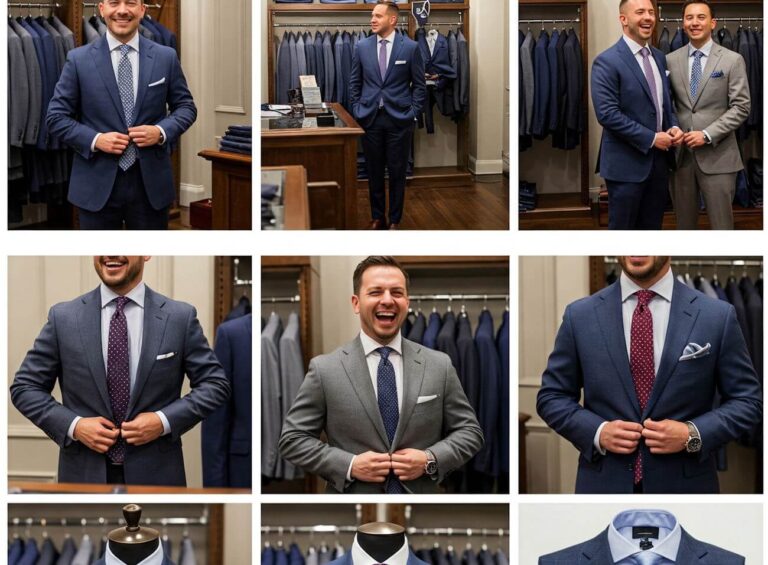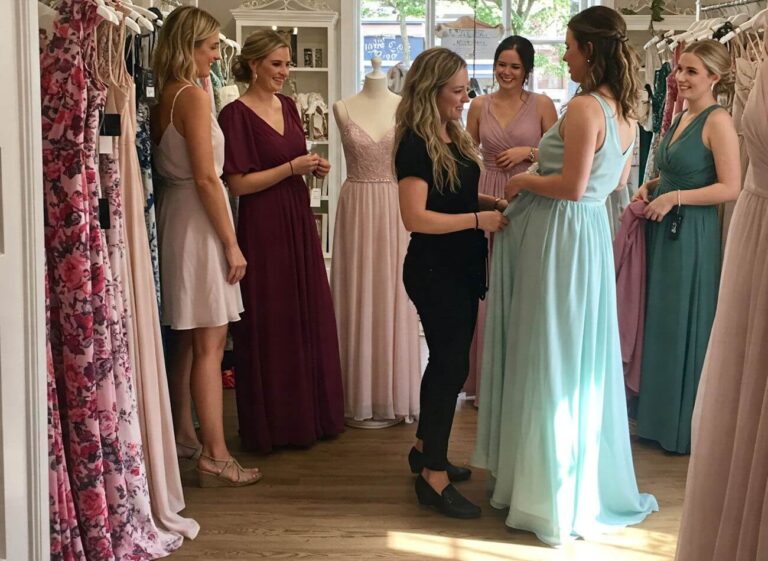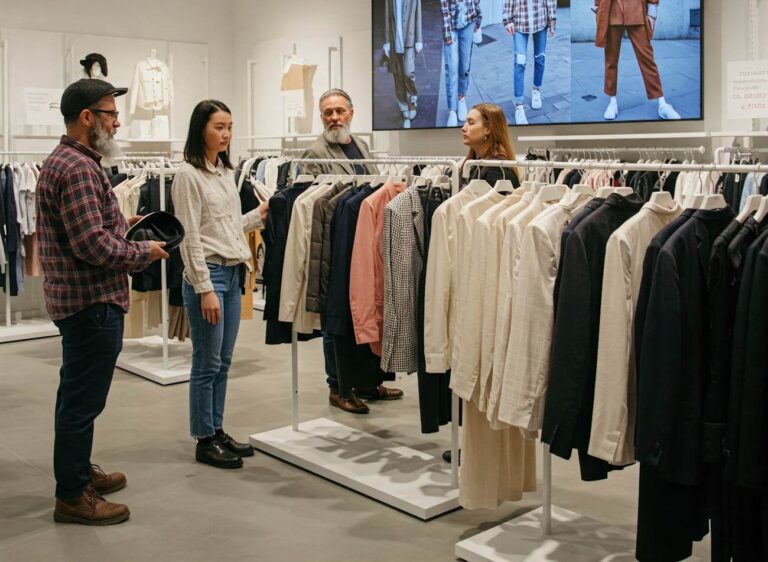Why Renting Your Outfit Is the Smartest Fashion Move in 2025
Introduction to the Rental Fashion Trend
In recent years, the concept of rental fashion has gained significant traction among consumers, transforming the way individuals approach their wardrobes. Initially emerging as a niche market, rental fashion has evolved into a prominent trend, addressing various consumer needs while also aligning with broader societal shifts. The origins of this movement can be traced back to the desire for cost-effective and versatile fashion solutions, catering primarily to special occasions. However, as awareness of environmental issues has grown, the appeal of renting outfits has broadened to encompass everyday wear.
By 2025, the rental fashion trend has seen remarkable growth, fueled by a combination of changing consumer behaviors and heightened awareness of sustainability. The fashion industry is notoriously known for its significant environmental impact, contributing to pollution and resource depletion. Consequently, many consumers are seeking alternatives to traditional purchasing methods, which often lead to overconsumption and waste. Renting outfits offers a practical solution to these pressing concerns, allowing individuals to enjoy high-quality clothing without the burden of ownership.
The rising interest in rental fashion is also influenced by the desire for variety and personalization. As consumers become increasingly fashion-conscious, they are looking for ways to express their individuality without accumulating excessive clothing. Rental services provide access to a diverse range of styles and brands, allowing individuals to experiment with their looks while maintaining a minimalist wardrobe. This growing appetite for unique fashion choices, combined with an emphasis on sustainability, has positioned rental fashion as a smart and responsible choice for modern consumers.
As we navigate through 2025, it is clear that renting outfits is not merely a trend but a reflection of evolving consumer values and a collective commitment to a more sustainable future. By embracing this innovative approach to fashion, individuals can enjoy both style and conscience, making the rental fashion trend a compelling option for the contemporary shopper.
Environmental Impact of Fast Fashion
Fast fashion has emerged as a significant contributor to environmental degradation, largely due to its business model that prioritizes rapid production and consumption. The allure of low prices and trendy styles often overshadows the hidden costs associated with these practices. It is estimated that the fashion industry is responsible for over 92 million tons of waste per year, with a considerable percentage ending up in landfills. This staggering figure represents not just discarded clothing but also immense amounts of resources wasted, from water consumption to energy use.
Every piece of clothing produced requires resources that are finite, such as water, which is increasingly becoming a scarce commodity. For instance, producing a single cotton shirt can use up to 2,700 liters of water, a fact that highlights the unsustainable nature of the fast fashion model. Moreover, the chemicals involved in dyeing and manufacturing garments can lead to soil and water pollution, adversely impacting local ecosystems and communities.
Renting outfits offers a solution to these pressing issues, promoting a circular economy within the fashion industry. As consumers opt for rental services rather than purchasing new clothing, they effectively reduce their individual carbon footprint and contribute to a decrease in waste generation. Studies have shown that if one in ten consumers chose to rent rather than buy, the environmental benefits could lead to a significant reduction in carbon emissions. Renting allows individuals to enjoy a variety of fashionable items without the burden of long-term commitment and disposal concerns, thereby supporting sustainable practices.
In light of the shifting paradigm towards sustainable fashion, embracing rental services not only aligns with personal style but also demonstrates a commitment to environmental stewardship. By choosing to rent instead of buy, individuals can play a crucial role in mitigating the environmental impact of fast fashion, fostering a healthier planet for future generations.
Economic Benefits of Renting Outfits
In recent years, the concept of renting outfits has gained significant traction, especially among fashion-conscious individuals looking for budget-friendly alternatives to purchasing high-end clothing. One of the primary economic advantages of renting outfits is cost-effectiveness. Owning a wardrobe filled with designer pieces can lead to exorbitant expenses, often pushing consumers beyond their financial limits. In contrast, renting allows individuals to access luxury items without the hefty price tag associated with ownership. This enables people to enjoy the latest fashion trends without making overwhelming financial commitments.
When evaluating the total expenses related to a frequently changing wardrobe, it becomes evident that renting presents a more economical solution. Many individuals purchase new clothing items regularly to keep up with evolving trends, resulting in high overall spending. In comparison, renting trendy garments for specific occasions provides a much more budget-friendly option, allowing consumers to wear quality pieces without the long-term financial burden. For instance, instead of spending hundreds or even thousands of dollars on items that may be worn only once, renting enables access to these garments at a fraction of the cost.
Moreover, the reduced need for maintenance and storage adds to the economic appeal of renting outfits. When clothes are rented, consumers do not have to worry about cleaning or caring for expensive fabrics, alleviating additional costs associated with ownership. This convenience further solidifies renting as an appealing choice in today’s fast-paced world where individuals often seek practical solutions that align with their lifestyles.
By choosing to rent outfits instead of purchasing them, consumers not only save money but also contribute to a more sustainable fashion cycle. Therefore, it stands to reason that renting is a smart, fashionable, and financially savvy decision for anyone looking to elevate their style in 2025.
Accessibility to High-Quality Brands
The fashion industry is witnessing a significant shift towards renting garments as an accessible avenue for consumers to engage with high-quality brands. As individuals increasingly seek ways to elevate their wardrobes without overspending, rental platforms have emerged as a viable solution. This trend allows consumers to enjoy designer clothing that would typically be beyond their budgetary constraints, fostering a taste for premium fashion experiences.
Several prominent rental services have gained traction, enabling customers to rent outfits for special occasions or to experiment with their daily style. For example, platforms such as Rent the Runway and HURR Collective have revolutionized the way consumers approach fashion by providing seamless access to a variety of designer labels. These services often feature a wide selection of clothing, making it easy for customers to find outfits from renowned brands, thereby enhancing their fashion choices.
Moreover, renting not only offers individuals the chance to wear high-end attire but also promotes sustainable fashion practices. By renting, consumers help prolong the lifecycle of garments, reducing waste associated with fast fashion. Case studies of these platforms illustrate how they allow users to enjoy luxury fashion without the long-term financial commitments that purchasing often entails. By embracing this model, individuals can curate a versatile wardrobe that adapts to their evolving tastes and needs, aligning with the latest trends without the burden of ownership.
In essence, renting outfits from high-quality brands presents an innovative way for consumers to access luxury fashion at a fraction of the cost. As the rental market continues to expand, it thus remains a key player in shaping the future of the fashion industry, making high-quality clothing more accessible than ever before.
Diversity and Variety for Every Occasion
The fashion landscape continues to evolve, with individuals increasingly seeking variety and diversity in their wardrobe choices. Renting outfits has emerged as an innovative solution, allowing consumers to experiment with different styles and trends without the long-term commitments associated with purchasing clothing. This flexibility is particularly beneficial, as it caters to an array of occasions, from casual gatherings to upscale formal events.
One of the significant advantages of renting outfits is the sheer diversity available through various rental platforms. Users can access a vast selection of garments, ranging from contemporary chic to classic elegance, enabling them to find the perfect outfit for any event. Whether it is a birthday party, wedding, business function, or a casual day out with friends, there is something available to suit every need. This wide range not only allows for personalization but also fosters an environment where individuals can explore styles they may not have previously considered.
The ability to rent clothing also encourages individuals to stay updated with the latest trends. With fashion cycles rapidly changing, owning a large wardrobe of trendy pieces may not be practical or financially viable. Instead, opting for rental services gives individuals the freedom to select items reflective of current fashion while avoiding overcrowded closets and clutter. Moreover, this model of consumption promotes sustainability, as it reduces the demand for mass-produced clothing, thus supporting eco-friendly practices in the fashion industry.
Incorporating this rental approach empowers consumers to express their personal style and adapt to evolving fashion landscapes. Ultimately, renting outfits can be seen as a liberating choice that not only enhances wardrobe diversity but also supports responsible fashion consumption. By embracing this innovative method, individuals can enjoy immense variety for every occasion without the pressure of commitment, making it a smart fashion move in 2025.
The Rise of Rental Platforms and Services
In 2025, the rental fashion industry has experienced a significant transformation, evolving into a robust market driven by various rental platforms and services. This sector has successfully capitalized on the growing consumer demand for sustainable and cost-effective fashion solutions. With increasing awareness around environmental issues and the negative implications of fast fashion, many consumers are now seeking alternatives that allow them to enjoy trendy outfits without contributing to waste.
Modern rental platforms have emerged, boasting user-friendly technologies that cater to the needs and preferences of fashion-conscious individuals. These platforms typically offer an extensive range of styles, from everyday wear to formal attire, ensuring that users can find the perfect outfit for any occasion. The integration of cutting-edge applications has simplified the browsing and booking process, enhancing the overall user experience. Features such as virtual try-ons and personalized recommendations based on user preferences not only make fashion rentals accessible but also add a touch of convenience.
Subscription models have also gained traction, allowing users to rent outfits on a monthly or yearly basis. This approach fosters loyalty among customers and encourages them to explore diverse styles regularly. Some popular platforms distinguish themselves through curated collections or exclusive collaborations with fashion designers, offering unique and limited-edition pieces that are unavailable elsewhere. Additionally, flexible rental terms have made it easier for consumers to experiment with bold trends without the financial commitment of purchasing new items.
The convergence of these factors has undoubtedly made rental platforms a central aspect of the fashion landscape in 2025. As the acceptance of renting over buying continues to spread, these services are poised to reshape how individuals approach fashion, making the act of dressing an experience that prioritizes sustainability and individuality.
The Fashion Community’s Shift in Mindset
In recent years, there has been a noticeable shift in the fashion community’s mindset towards the concept of renting clothing. Designers, influencers, and fashion enthusiasts alike are increasingly recognizing the benefits of this sustainable practice. The traditional perspective of ownership and exclusivity is evolving, giving way to a more communal approach to fashion. As environmental concerns rise and consumers seek smarter choices, the notion of renting outfits has gained traction as a viable alternative.
Notably, higher-profile designers have begun to incorporate rental options into their business models. Many are embracing this trend as a way to reduce waste and increase accessibility to high-quality fashion pieces. For instance, acclaimed designer Stella McCartney has expressed her support for the rental movement, highlighting how it aligns with her commitment to sustainability. Such endorsements from leading figures inspire others in the industry to follow suit, thus promoting a more responsible approach to fashion consumption.
Influencers have also played a critical role in normalizing this new mindset. Social media platforms are flooded with testimonials showcasing personal anecdotes about successful rental experiences. Influencers regularly share their thoughts on platforms like Instagram, discussing their favorite rental services and advocating for the convenience and affordability that renting provides. According to fashion influencer Sarah Thompson, “Renting allows me to experiment with trends without the guilt of contributing to fast fashion. It’s become an integral part of my style evolution.” Such sentiments echo throughout the community, reinforcing that renting is not merely a trend but a transformative shift in how we perceive fashion.
As more individuals share their positive experiences with rental services, the fashion community continues to embrace this change. Rentable wardrobes are becoming widely accepted, signifying a progressive step towards a more sustainable and collaborative future in fashion. This shift not only benefits the individual wardrobe but also contributes positively to the industry’s efforts in combating environmental issues.
Challenges and Considerations of Renting Outfits
While renting outfits can be a practical and stylish solution for contemporary fashion needs, it does present some challenges and considerations that potential renters should be aware of. One primary concern is the fit of the clothing. Since rental services often provide a wide array of sizes, it can be tricky to find the perfect fit. It is advisable for renters to carefully consult size guides and consider the specific brand’s measurements, as sizes can vary significantly between designers. It may also be beneficial to read reviews from previous customers who can offer insights regarding fit consistency and comfort.
Another challenge is the availability of specific styles or sizes desired at a given time. Popular items may be booked out, especially during peak seasons or major events, limiting your options. To mitigate this issue, it is wise to plan ahead and reserve outfits well in advance. By doing so, you increase the likelihood of securing the attire that aligns with your style and event requirements.
Quality concerns are also associated with renting clothing. While many rental platforms maintain high standards, there is always the possibility of receiving an item that does not meet expectations. It is crucial to select reputable rental services that prioritize garment care and cleanliness. Customers should also examine return policies related to damaged or unsatisfactory items, ensuring that they are equipped with necessary information should an issue arise.
To maximize your rental experience, consider starting with a rental service that offers minor design or casual pieces before venturing into more high-stakes garments. Trial runs can help build confidence in utilizing rental services. By addressing these considerations, renters can experience the convenience and flexibility of renting outfits without the common reservations that may arise.
Conclusion: The Future of Fashion is Renting
As we have explored throughout this blog post, the practice of renting outfits has evolved into a viable and sensible option for consumers in 2025. The appeal of outfit rental services lies not only in their ability to provide access to a wider variety of fashion choices but also in their alignment with contemporary values surrounding sustainability and responsible consumption. By renting clothing, consumers can enjoy high-quality garments without contributing to the environmental impact caused by fast fashion.
The financial benefits associated with renting outfits are evident, as individuals can enjoy designer pieces for a fraction of the retail price. This approach ensures that fashion remains accessible, regardless of one’s budget, thereby promoting inclusivity within the fashion industry. Furthermore, the notion of rotating one’s wardrobe aligns with the modern consumer’s desire for variety without the burden of ownership. In this context, rental services facilitate a dynamic relationship with clothing, allowing for experimentation with styles and trends without a long-term commitment.
Looking ahead, it is anticipated that the rental model will continue to shape the future of the fashion industry. As society becomes more conscientious about consumption, the rise of rental platforms is likely to lead to innovative practices that champion circular fashion. This shift not only provides economic advantages but also fosters a sense of community among renters who share similar values regarding the lifecycle of clothing. In conclusion, renting outfits is more than just a temporary trend; it represents a progressive shift toward sustainable fashion choices that prioritize both style and responsibility. The future of fashion, undoubtedly, is inclined toward embracing rental services as a staple in our wardrobes.


